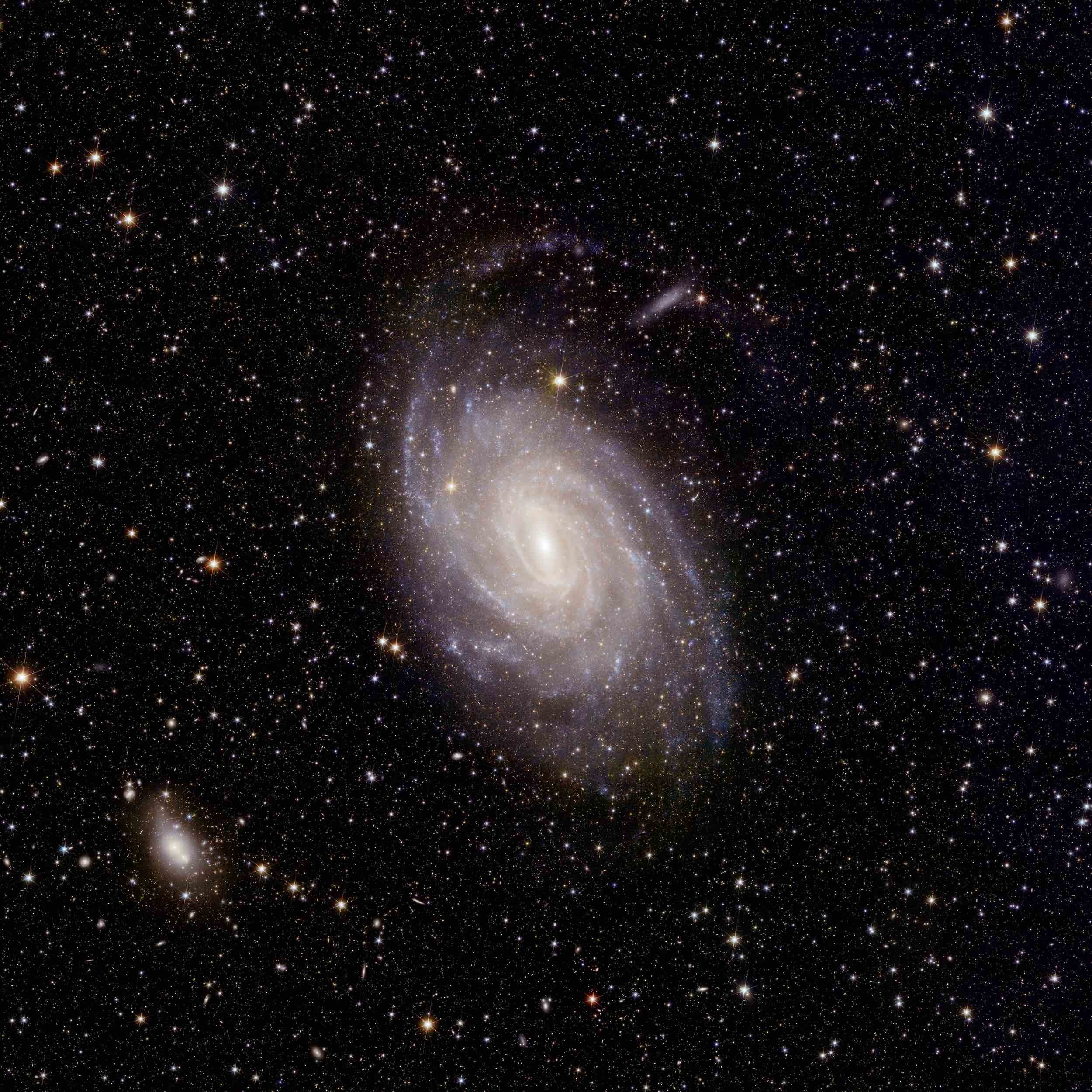17.07.2024
Small galaxies in the early universe might have had centers dominated by dark matter, according to new research.

The Euclid spacecraft snapped this photo of the spiral galaxy NGC 6744. This galaxy is similar in structure to our Milky Way.
ESA / Euclid / Euclid Consortium / NASA; image processing by J.-C. Cuillandre (CEA Paris-Saclay), G. Anselmi / CC BY-SA 3.0 IGO
Small galaxies in the early universe might have had centers dominated by dark matter. New research dives into cosmological simulations to explore what these galaxies would look like in the universe today and what this might mean for the Milky Way’s dark matter past.
DARK MATTER HISTORY OF SMALL GALAXIES
Recently, a research team led by Anna de Graaff (Max Planck Institute for Astronomy) used the James Webb Space Telescope (JWST) to examine six small, low-mass galaxies in the early universe. They discovered something surprising: the centers of these galaxies appeared to be dominated by dark matter, a hypothetical form of matter that neither emits nor absorbs light, among other strange qualities. Though dark matter is thought to make up roughly 85% of the matter in our universe, research shows that the cores of massive galaxies in the universe today contain mostly normal matter.
To check whether the intriguing new JWST observations match our theoretical understanding of the universe’s evolution, and to explore how these dark matter–dominated galaxies might evolve to the present day, de Graaff and collaborators turned to TNG50: a massive cosmological simulation that tracks the universe from its infancy to today.
ENTER THE SIMULATION

de Graaff et al. / Astrophysical Journal Letters 2024
Using TNG50, the team selected 381 simulated galaxies with redshifts and stellar masses similar to the real galaxies in the JWST sample. They found that the lower-mass galaxies in the simulated sample — those with stellar masses less than about 300 million solar masses — had centers dominated by dark matter, containing just 10–30% normal matter by mass. The higher a galaxy’s stellar mass, the higher the fraction of normal matter in the galaxy’s center.
This result agrees well with what de Graaff’s team observed in real galaxies with JWST, though the team pointed out that it’s possible that the galaxies they studied with JWST only appear to have dark matter–dominated cores. For example, if the gas in these galaxies’ centers is disrupted by outflows from newly forming stars, it could skew the estimate of the amount of dark matter present. Because the simulated galaxies do have dark matter–dominated cores, this finding suggests that this may be a real phase in galaxy evolution.
Redshift evolution of the core dark matter fraction. The colored line and shaded areas show the results from the TNG50 simulation, while the colored symbols show the results from observational studies. Click to enlarge.
FOLLOWING EVOLVING GALAXIES

de Graaff et al. / Astrophysical Journal Letters 2024
What would these early dark matter–dominated galaxies look like later in the universe’s history? Going forward in time in the simulation, the galaxies merged and grew, dwindling from 381 galaxies to just 213 due to mergers. At a redshift of z = 3 — during a period called cosmic noon, when star formation was at its peak — the low-mass dark matter–dominated galaxies had grown to contain 10 billion solar masses of stars, similar in size to other galaxies spotted in that time period.
By the present day, these same galaxies had packed on additional stellar mass, reaching about 30 billion solar masses of stars — roughly equal to the mass of stars in the Milky Way — and their centers no longer contained mostly dark matter. While more work is needed to explore this scenario, this suggests that the Milky Way and galaxies like it in the universe today were once small, low-mass galaxies with dark matter cores.
Quelle: Sky&Telescope
